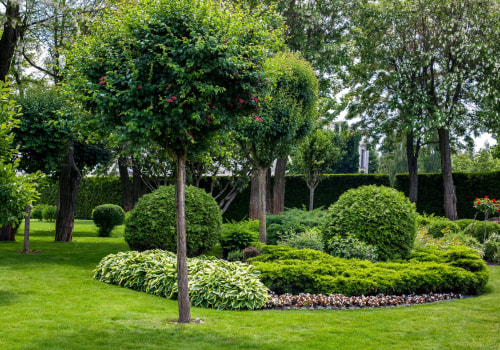When considering what kind of tree to plant, walk as far as you go and look up. The final width of a tree is a tremendously important consideration that cannot be overstated. Trees thrive when planted in the right place. Find your hardiness zone to see what trees can be planted in your area.
Trees are grouped into two general categories according to their size. Ornamental trees are generally small trees, which mature to less than 30 feet tall and 10 to 20 feet wide. Shade trees are considered large trees and typically grow 30 to 60 feet or more tall and wide. Thanks to plant breeding, there are many exceptions to the above groups. Trees are grouped into two general categories according to their size. Ornamental trees are generally small trees, which mature to less than 30 feet tall and 10 to 20 feet wide. Shade trees are considered large trees and typically grow 30 to 60 feet or more tall and wide. Thanks to plant breeding, there are many exceptions to the above groups.
Evergreens come in all shapes and sizes and, as a result, have different uses in the landscape. Large and dense evergreens, such as many pine and fir trees, are effective against wind and can also provide protection on larger properties. Small, narrow evergreens such as the arborviate and some cedars and cypresses can form excellent privacy screens without taking up too much space. Evergreen trees can also come in a wide range of colors, from light green to dark green, blue and even gold, so that personal preferences can usually be met.
Homeowners should consider soil conditions, what clearance is needed for sidewalks or driveways, and what role will the tree play before asking the question: “What kind of tree should I plant? There is another reason to exercise a wise selection of plants when choosing a tree. Many trees grow slowly, which means you'll have to wait years to reap the benefits of planting them. When that waiting period is over, you don't want to have to burden yourself with features you didn't trade for. Make sure you know what to expect before installing a tree.
A beautiful tree specimen can become the star of your garden. Group tree plantations can be a focal point, frame a landscape. Leonard suggests combining fast and slow growing plants to stagger the life expectancy of trees. Trees often serve as the focal point of a mature landscape due to their imposing height and sometimes their powerful branches.
A shade tree is an excellent addition to the landscape of the house because the canopy provides shade in summer, but when the leaves fall in winter, more of that ever-important sunlight reaches the house. These trees tend to grow more slowly and are more expensive, but their beauty gives them a place of distinction in the landscape. Evergreen shrubs and trees keep their lush green foliage all year round, bringing a consistent pop of color to your mature landscaping design. Even if you're not an arborist, you can buy great garden trees to meet your intended goals.
An arborist can help owners select the right tree depending on the landscape and desired function. One of the best ways to narrow down your options is to determine the purpose of trees in your landscape design, so you can choose varieties with the right characteristics. The tree you choose for front yard landscaping makes a statement about who you are and provides exterior appeal for your home. In addition to considering how quickly you need the tree to grow, you may want to consider its size at maturity before choosing its role in your landscape design.
Although trees are a great addition to a landscape, not all trees are equally suitable for every site or climate. For example, some trees drop nuts, seeds, fruits, flowers and twigs that you have to deal with to keep your garden perfectly landscaped. Choosing the right tree for your garden involves more than just finding a healthy tree that looks like it can provide you with the service you want. Choosing the right tree usually involves thinking about the reasons behind your decision to include trees in your backyard design.
Not only should you consider the reason for your purchase, but you should also research the type of environment your garden trees will need for healthy growth. .




